The following was written by Frank.
The United States has a long history of striking coins for other nations across the world. In fact, the U.S. has struck coins for over 40 different countries and over 1,000 different types! The total amount of coins amasses to an impressive 11 billion coins across six different U.S. Mints - Philadelphia, Denver, San Francisco, New Orleans, West Point, and the Manila Mint located in the Philippines.
Congress first granted permission to the U.S. Mint to strike coins for foreign countries in 1874: “It shall be lawful for coinage to be executed at the mints of the United States for any foreign country… provided, that the manufacture of such coin shall not interfere with the required coinage of the United States" (Jan. 29, 1874, Ch. 19, 18 Stat. 6.). The very first coin struck for foreign commerce was the Venezuelan 2 ½ Centavos coin in 1876, of which 2 million coins were struck. The Mint struck coins for Venezuela up until 1959, an 83-year long stretch.
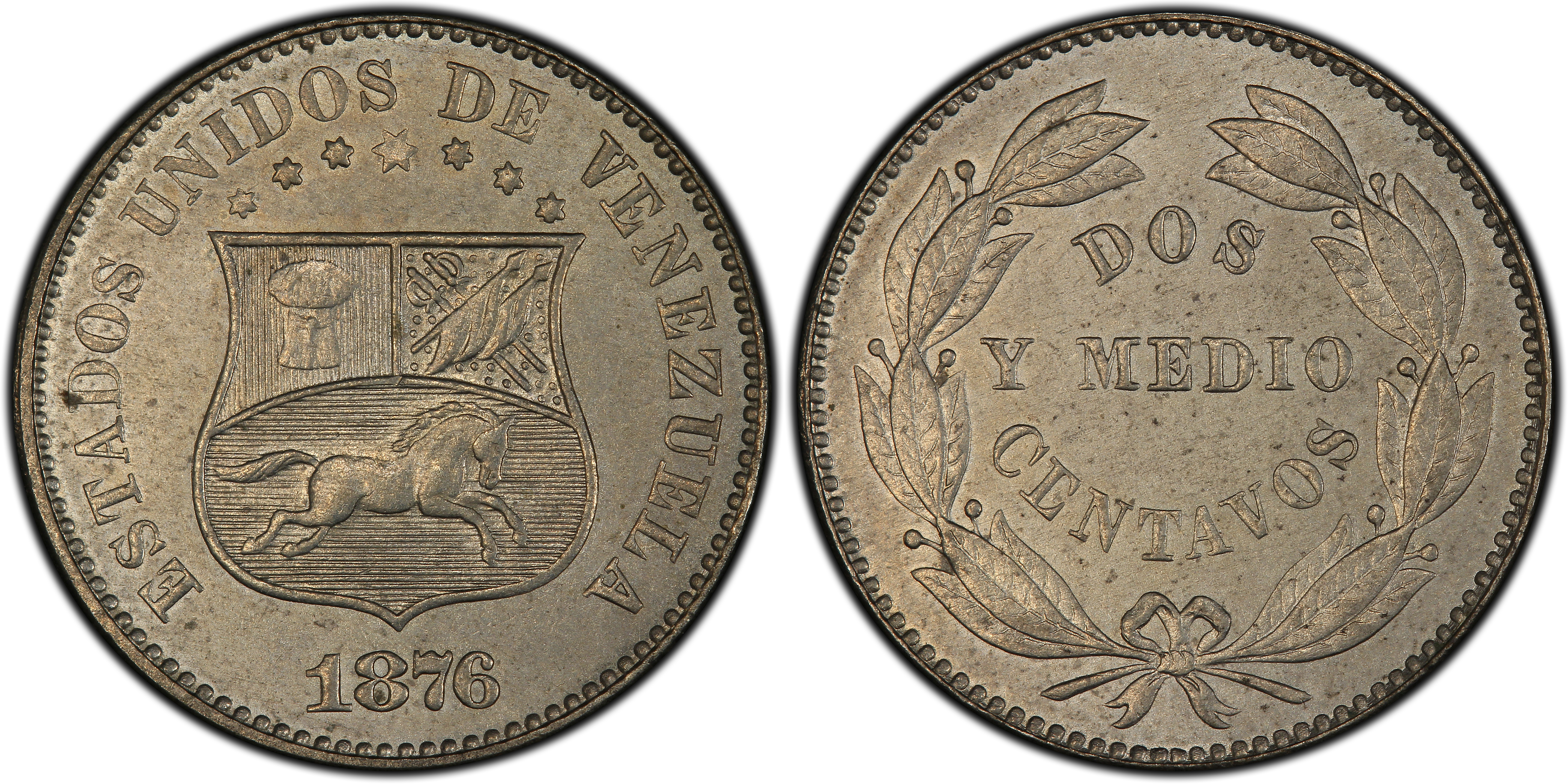
Image courtesy of PCGS.
One of the most interesting coins struck for another nation is the 1944 Belgian 2 Francs. These coins were struck by the Philadelphia Mint on surplus 1943 steel cent blank planchets. 25 million of these coins were struck during the Allied Occupation of Belgium, and are very affordable to obtain; raw coins are readily available for as little as $1. These 2 Francs are to blame for the U.S. 1944 Steel Cent mint errors, as some of these planchets were accidentally fed into machinery which were producing cents instead of 2 Francs.
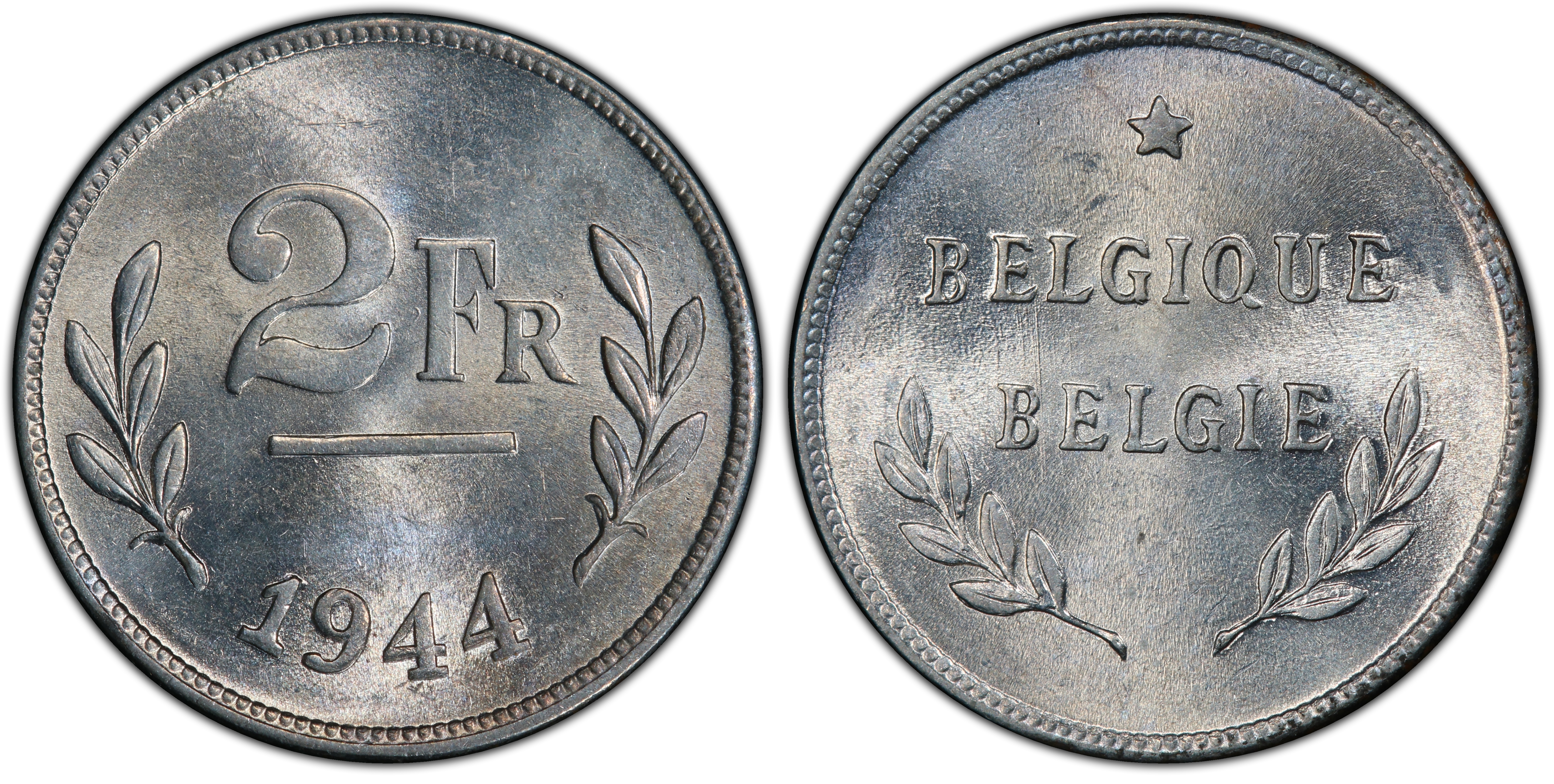
Image courtesy of PCGS.
One of the most well-known countries which the United States produced coins for is the Philippines. The United States gained control of the Philippines because of the Spanish American war in 1898. Coins were struck by the Philadelphia, Denver, Manila, and San Francisco Mints from 1903 through 1965. The Manila Mint was in operation from 1920-1922 and 1925-1941. The Manila Mint remains as the only U.S. Mint located outside of the continental United States.
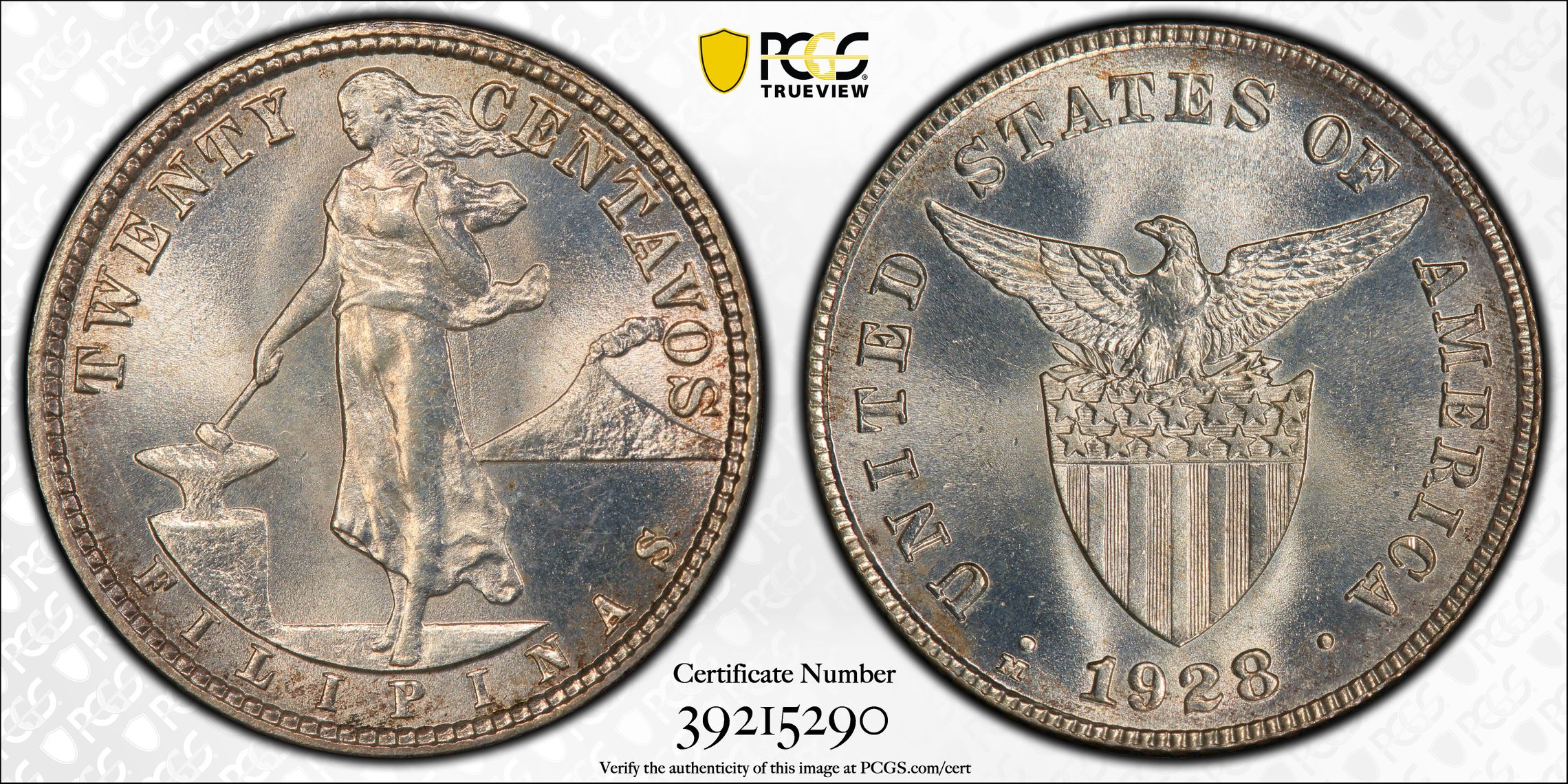
Image courtesy of PCGS.
Another popular series which was struck by the U.S. Mint is the 1883 Hawaiian Coinage series. The San Francisco Mint struck dimes, quarters, half dollars, and dollars for the Kingdom of Hawaii in 1883 and 1884, but all coins bear the 1883 date.
When most people think of the smallest coin struck by the U.S. Mint, they often think of the Type 1 gold dollar, which has a diameter of 12.7mm. But, the smallest coin which the U.S. Mint struck was the 1904 Panama 2 ½ Centesimos which has a diameter of just 10mm. This coin is properly nicknamed the “pill” because of its small size.
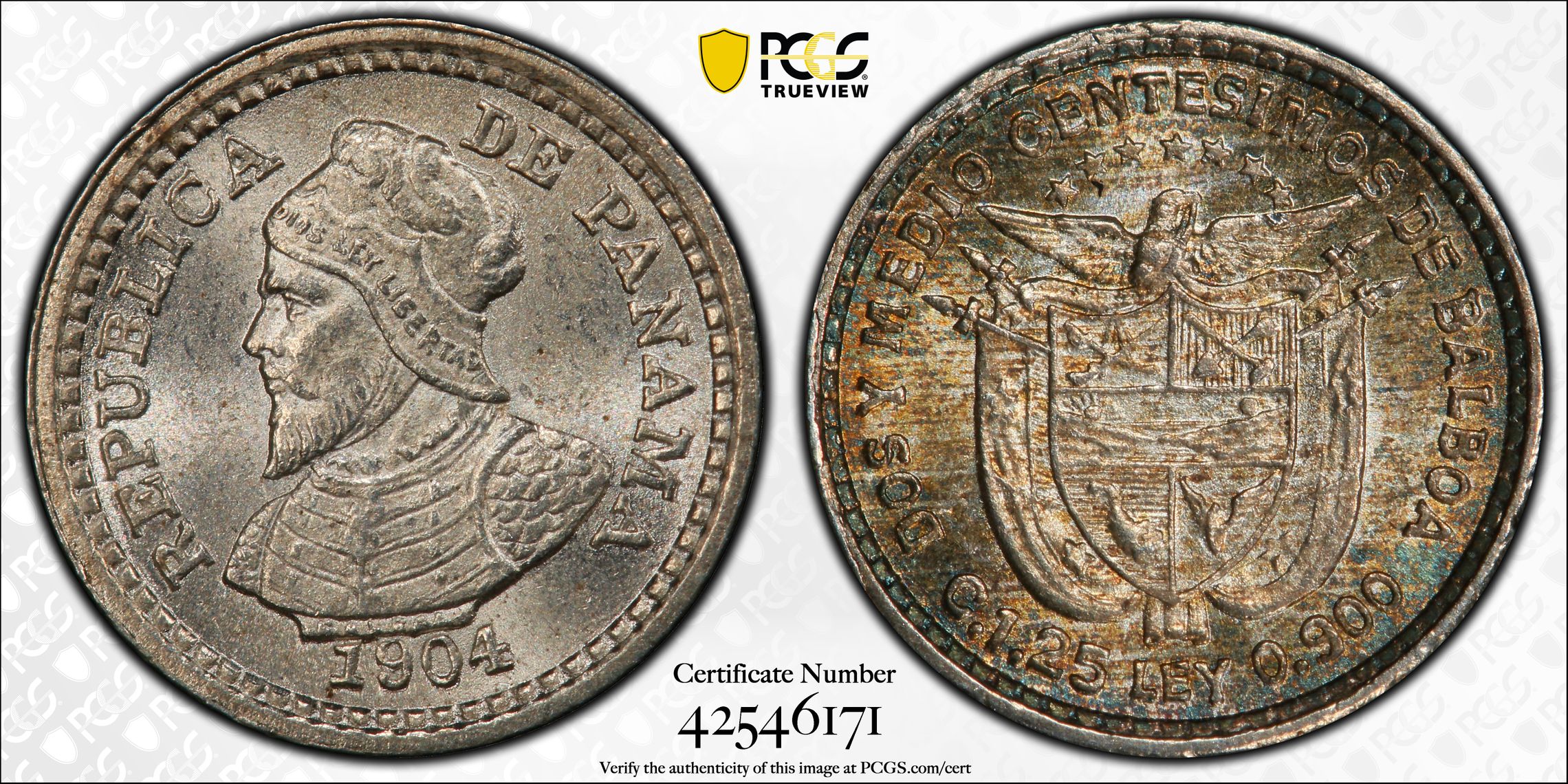
Image courtesy of PCGS.
The sole coin struck by the New Orleans Mint for a foreign nation was the Mexican 1907 20 Centavos. Only the coins with the Curved 7 variety were struck at the New Orleans Mint. Although they bear the Mexico City mint mark on the obverse, they were indeed struck in New Orleans. Once again, these coins are relatively affordable with certified pieces in low mint state grades available for $50-$100.
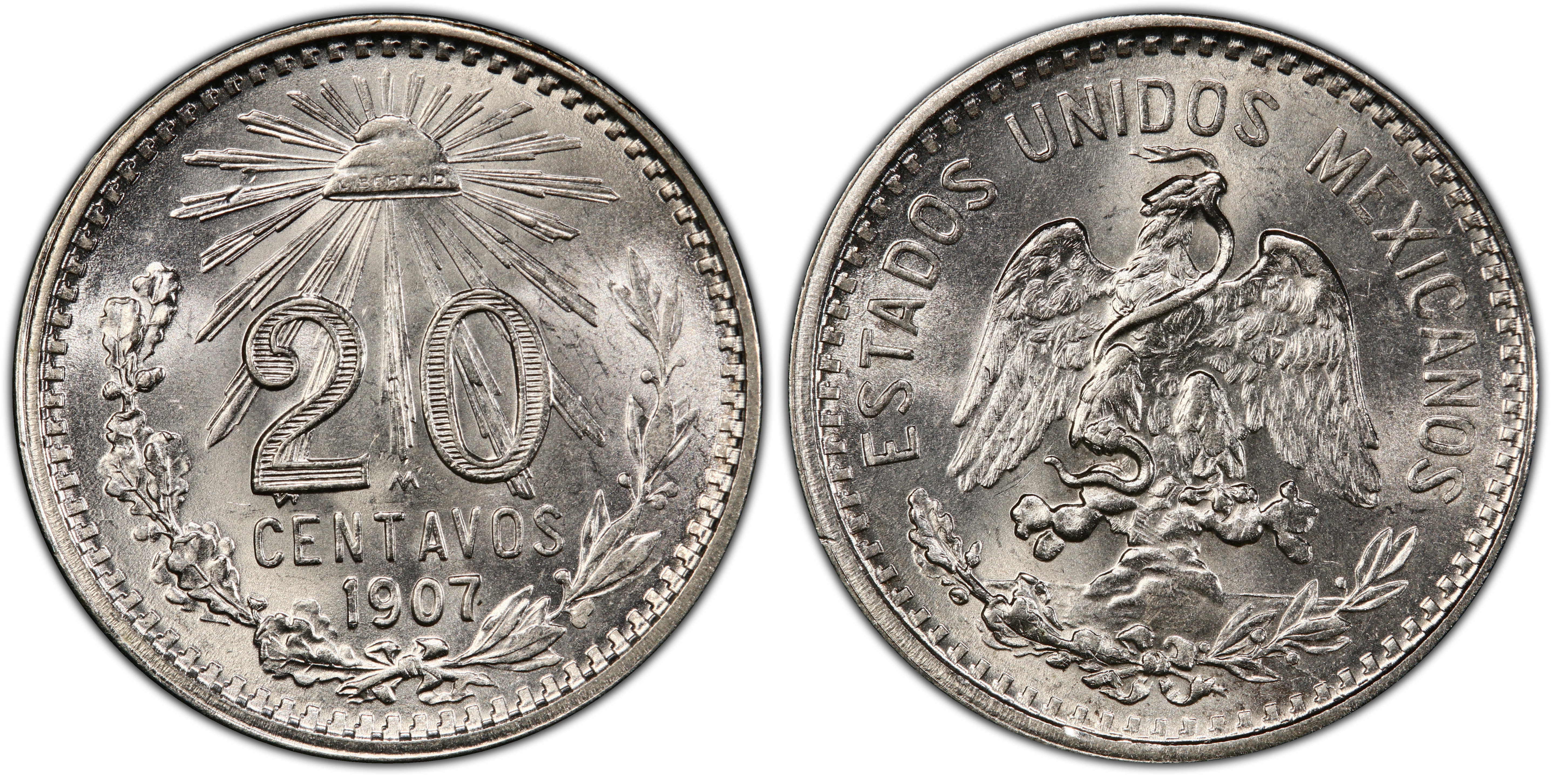
Image courtesy of PCGS.
The last coins struck for foreign nations by the U.S. Mint are 1983 Panamanian One Centesimo through the Half Balboa, struck in both 1983 and 1984. Both the Philadelphia and West Point Mints struck these issues. The Mint has not struck any coins for any foreign countries since 1984 and it doesn’t look like they will do so anytime soon.
Many collectors are unaware of just how many different types of coins the U.S. struck for other nations, which offers a unique collecting opportunity that fits in the budgets of all collectors. Many of the modern issues can be obtained for under $1, while many of the earlier coins fetch hundreds or thousands of dollars in high grades.
Sources:
https://www.pcgs.com/news/mexico-coin-made-in-the-new-orleans-mint
https://coins.www.collectors-society.com/wcm/CoinCustomSetView.aspx?s=13492
The following was written by Frank.
The United States has seen its fair number of gold rushes throughout its history. The first gold rush in our nation’s history was sparked in 1799 by a young boy named Conrad Reed in Cabarrus County, North Carolina. While skipping Sunday school, Conrad Reed discovered a 17 pound gold nugget in a creek on his family farm. Gold was not commonly seen in this part of the country, the Reeds had no idea what they had stumbled upon. So, instead of scrapping it or selling it, the Reeds put the nugget to practical use as a doorstop for 3 years. In 1802, the Reeds showed the gold nugget to a local jeweler who knew exactly what it was and bought it for a measly $3.50, which was one-tenth of one percent its true value (roughly $3,500). Talk about getting put through the wringer!
Conrad’s father, John Reed, soon realized that he had made a huge mistake by selling the gold nugget for such a small price. In 1803, John had built a partnership with some other men and began a gold expedition. During their search for gold, a 28 pound gold nugget was discovered by an enslaved boy named Peter. By 1824, the Reed Gold Mine had discovered over $100,000 in gold (over $2,000,000 in today’s dollars). Many other hopeful miners followed suit and were successful in their search for gold.
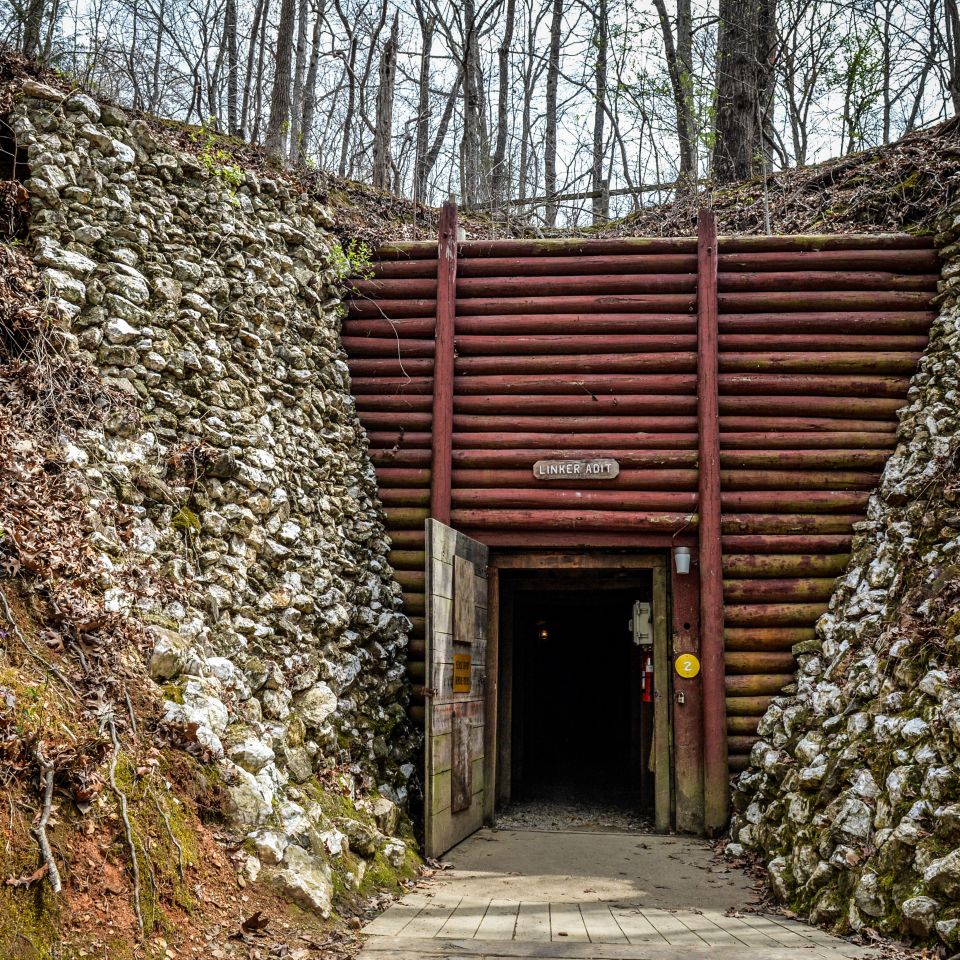
This massive discovery of gold in North Carolina eventually led to the formation of the Charlotte Mint. The Act of March 3, 1835 established three branch mints, the Charlotte and Dahlonega Mints for the minting of gold coinage and the New Orleans Mint for the minting of silver and gold coins. The construction of the Charlotte Mint began in 1835 and the first coins, 678 half eagles, were struck in March of 1838. The Charlotte Mint operated from 1838 through 1861 and struck coins in the denominations of one dollar, quarter eagle, and half eagle. North Carolina seceded from the Union on April 20, 1861 which geographically placed the Mint in a different nation. Some of the 1861-C half eagles were in fact struck under Confederate authority.
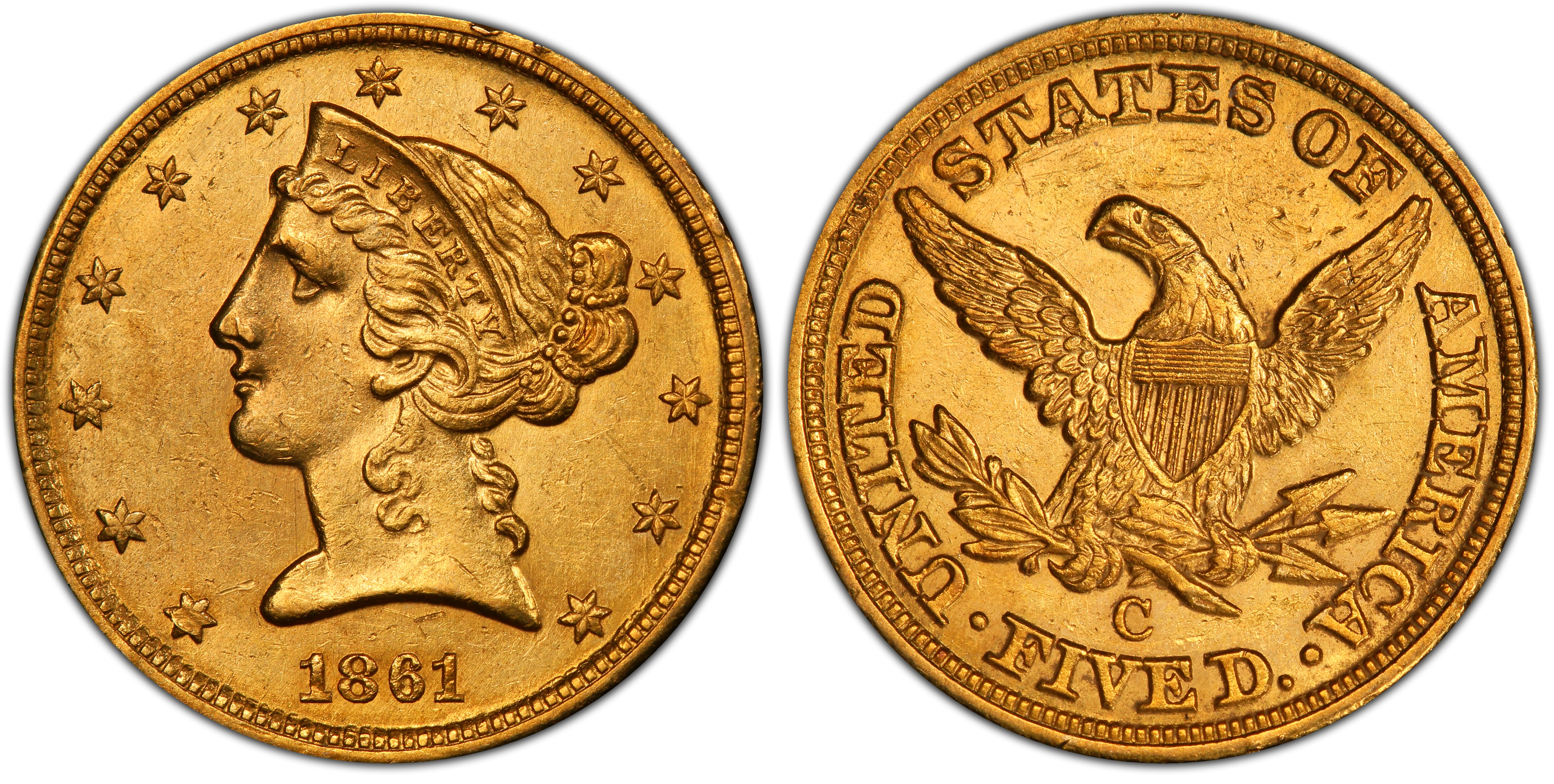
Image courtesy of PCGS
The first person credited with discovering gold in Georgia was Benjamin Parks in 1828, close to where the town of Dahlonega, Georgia would later be established. This discovery of gold sparked an influx of miners in hope of striking it rich. The sudden increase in population quickly turned the Dahlonega area into a boomtown. The town of Dahlonega got its name from the Cherokee word Dalonige which translates to “yellow” or “gold”.
Ten years after the initial discovery of gold in the Dahlonega area, the Mint officially opened its doors in 1838 and began striking coins on April 21, 1838. The first coins struck at the Dahlonega Mint were Classic Head half eagles. The Dahlonega Mint struck coins in the denominations of one dollar, quarter eagle, three dollars, and half eagle from 1838-1861, until the Confederate forces abruptly took over the Mint. There were several 1861-D gold dollars and half eagles that were struck by the Confederates.
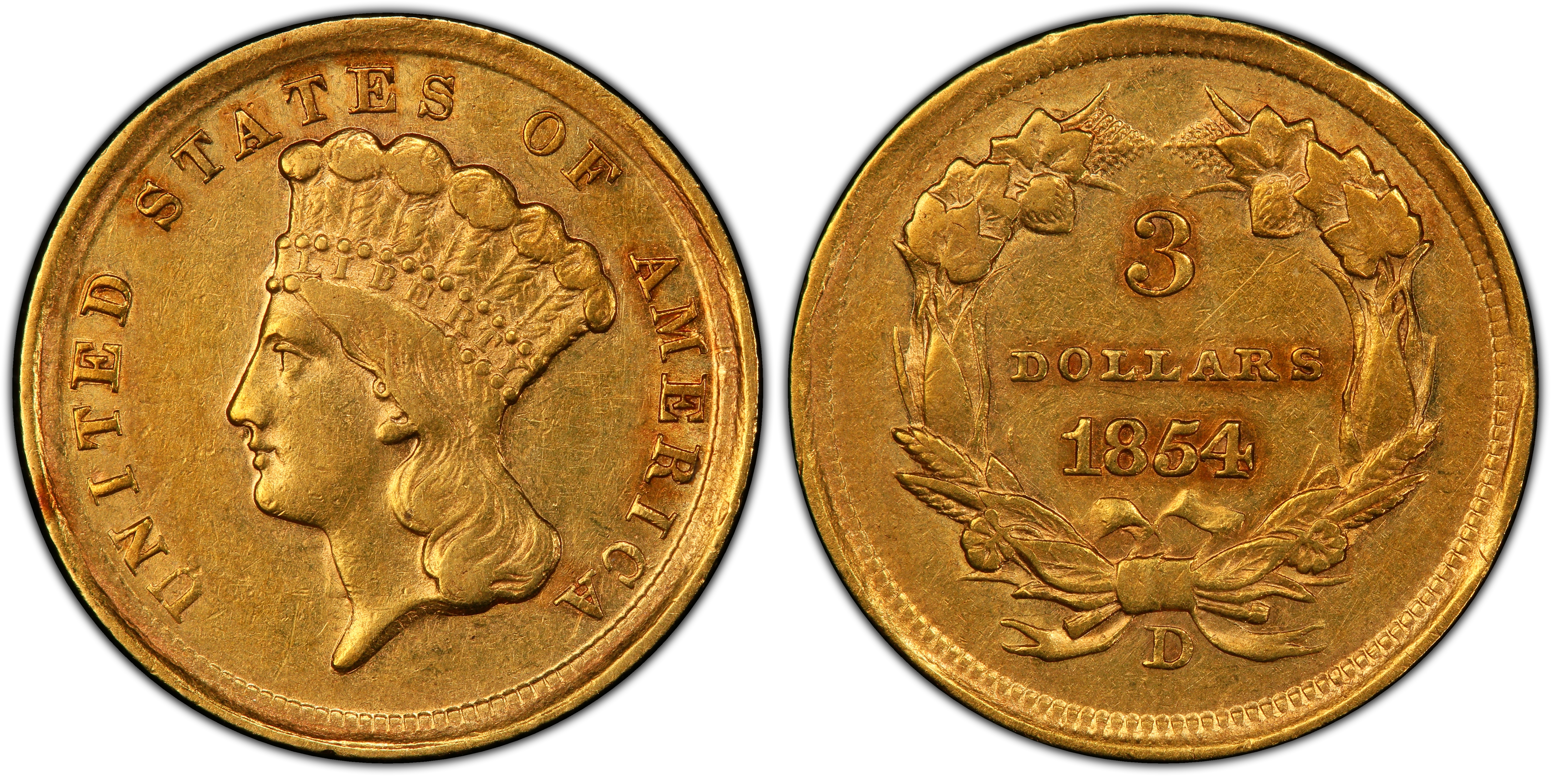
Image courtesy of PCGS
Today, all coins that were struck at the Charlotte and Dahlonega Mints are highly sought after by collectors. The most affordable straight-graded coins can be attained for around $2,500. The background stories of the Charlotte and Dahlonega Mints are fascinating and packed with history.
Sources:
https://archive.org/details/charlottemintgold1987wint/page/n11/mode/2up?view=theater&q=reed
https://historicsites.nc.gov/all-sites/reed-gold-mine/history
https://archive.org/details/dahlonegamint2003wint/page/n31/mode/2up?view=theater&q=reed
The following was written by Chris.
We attended the annual FUN show in Orlando earlier this month. For the first time in some years, it was not held the first week of January. It was nice to be able to enjoy the New Year’s holiday with friends and family without having to pack up coins and fly out right away for a coin show. As with last year, it was Tom, Frank, Brian, and I in attendance.
Three of us stayed at the usual condo community which is near the convention center, and a good exercise walking distance to the concourse where the show was. Tom got the Hilton this time, also a very doable walk to the show. The weather was…cold. We checked the forecast before coming down, but it was still a bit of a surprise once we got in. It wasn’t much warmer than Boston!
I flew down early afternoon on Monday, as I had a buying appointment with a wholesale dealer in their hotel room. The rest of the guys flew down later that night. My jetBlue flight was on time. I usually dump on jetBlue for their on-time performance, but I have miraculously had five on-time trips in a row (ten flights!). If you hear a sound, that’s me banging on wood. Unfortunately, Brian, Tom, and Frank were not so lucky with their flight.
The FUN show organizers tried something a little different this year. They hosted a dealer day on Tuesday in one of the convention center rooms. There were no assigned tables, no guaranteed electricity, no show cases, and only two wrist bands for entry were allowed per company. I think perhaps the show was trying to improve safety for the dealers, so that they could do business in a single room with security present, rather than riding around in Ubers doing hotel business. I found this to be impractical, as the trading room didn’t open until 11 am (also, I like proper lights when viewing coins…I don’t know how people can look at coins in the dark). In order to get early shot on coins, I was Ubering to hotels before 8 am, and it stayed that way pretty much the whole day for me. Tom did some buying business in the trading room, while Frank was busy in the convention center hallway buying from his usual guys. Brian was working the whole day selling coins, mostly meeting dealers either in their hotel rooms or their own private rooms at the convention center.
The show itself started Wednesday at 2 pm. Dealers were so anxious to get in that there was an unsafe backlog of people trying to get in the doors as others were pouring down the escalators. Convention staff and even a Sheriff’s deputy were yelling at folks up top to stop piling onto the escalator. It got dicey there for a bit.
As with last year, there was a huge public presence on Thursday. It was pretty incredible. It definitely slowed down on Friday, but I would say overall it was a very well-attended show, both by dealers and the public. If you are located in the Orlando area (or even if not and you have to get on a plane), and you’ve never been to a coin show, perhaps consider next year’s FUN show. It’s easily the second largest show of the year, and is not that far behind the summer ANA show. You will likely be amazed by how big FUN is, and how many coins there are to see.
How was our FUN experience? Overall, a good show. Sales were a little disappointing but still decent. Dealers were certainly willing to look, and the dealers we spoke to said they had a very good show. We did have possibly the best buying show we’ve ever had. When all was said and done, I think we came home with/shipped eight double row boxes of newps. And we saw no softness whatsoever in the market.
Foodwise, there’s nothing too exciting to boast about. Brian and I got Grubhub every night but one at the condo. We did venture one night with a coin dealer friend to a great burger joint within walking distance called Beth’s Burger Bar. If you’re ever in the area, I recommend checking it out (www.bethsburgerbar.com). Beth was even there the night we went in. Frank was able to escape the condo a couple of night to enjoy some nice dinners.
Lastly, I was fortunate enough to be able to reconnect again with some buddies from Florida State, as I stayed until Sunday to have some fun. It’s always a treat when they are able to come down from Tallahassee. My flight home was…on time!
I’m looking forward to the summer FUN show in July. Maybe I’ll see you there!
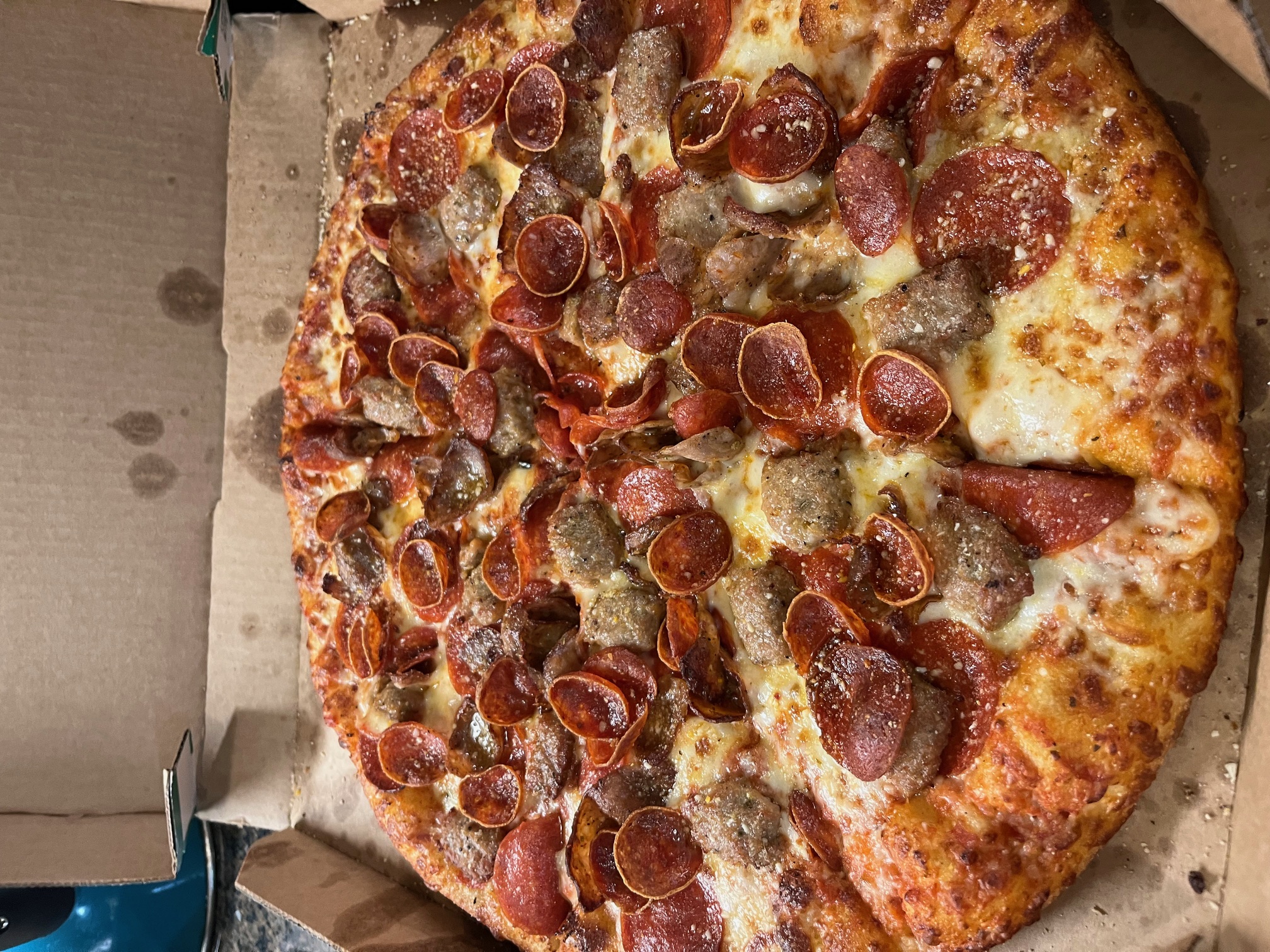
Delivery one night from a pretty darn good joint called NYPD Pizza (www.nypdpizzeria.com).
Yes, this clown is playing with his coins in the bathroom.
The following was posted by Chris.
Many of you have no doubt seen examples of NGC, PCGS, ANACS, etc. holders out there with custom inserts. We thought we'd take the opportunity to share some that we have.
We did this promotional insert when our state quarter came out.
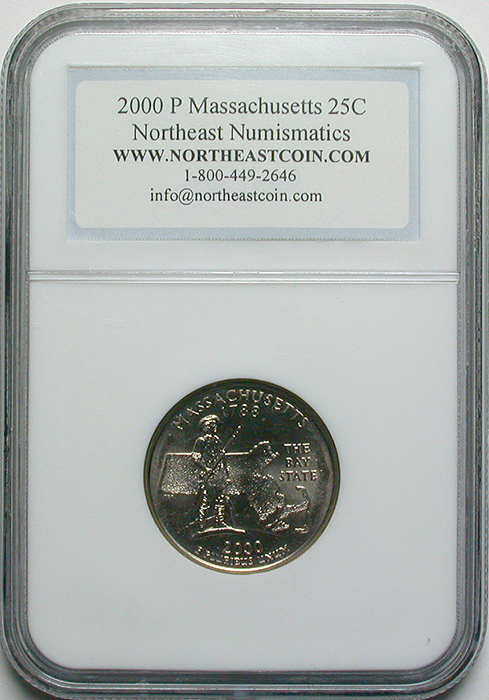
We did this one to commemorate Tom's 50 years in the coin business.
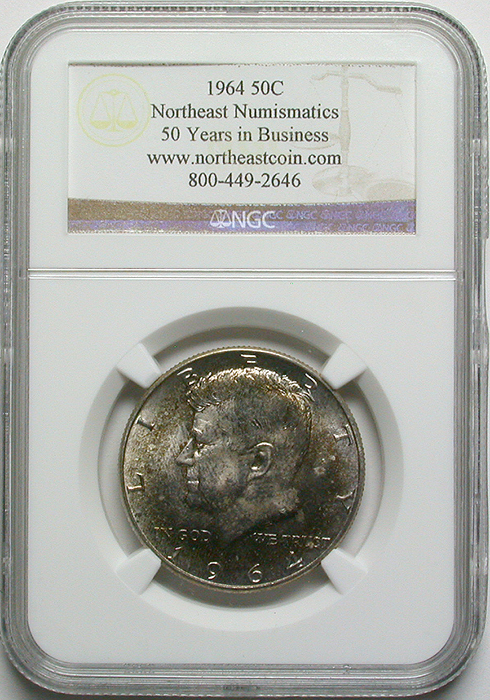
Tom had a custom insert created for his son Russell when he graduated high school. He had both Silver and Gold Eagles holdered. Keep in mind gold was less than $500/oz back then. Had he graduated today, not sure how many (if any) Gold Eagles would have been used!
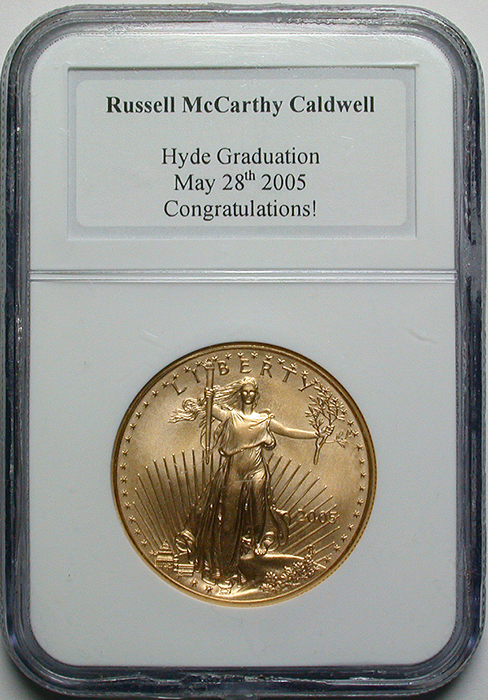
This one I picked up many years ago. I was attending a coin show in Baltimore and was fortunate enough to be invited on a bus ride down to the Smithsonian to view part of the National Numismatic Collection. NGC had these holders done as a commemoration of an exhibit opening.
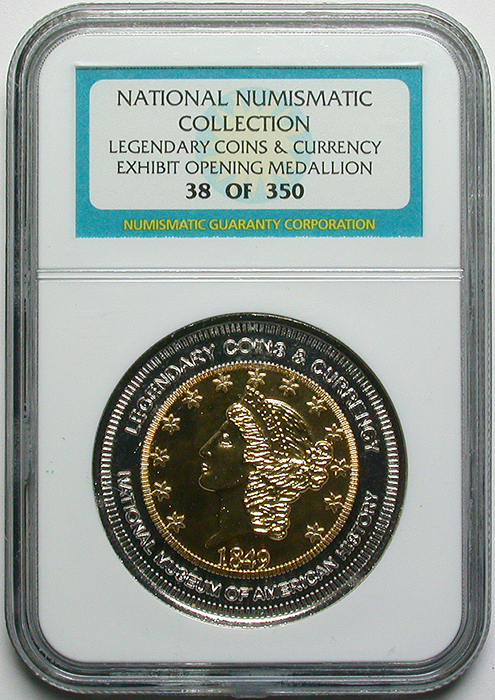
And lastly, this piece I received from a good friend, who happened to be my very first friend in the coin business, going all the way back to 1996! It commemorated his wedding.
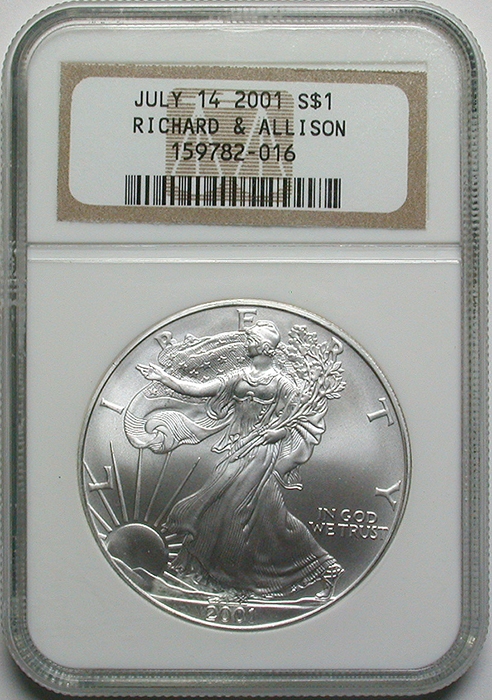
Do you have any custom holders in your collection. If so, we'd love to see them! Please email them to chris@northeastcoin.com and I'll get them posted.
Our apologies for the lack of blog posts lately! We've let personal and business travel get in the way. The following was written by Frank.
My numismatic journey started in elementary school. I remember distinctively when I was 7 or 8, my father came home from work with a 1961 Washington silver quarter that he had found in his pocket change. He pulled it out of his pocket and showed it to me, explaining the significance of the coin; the coin was made of 90% silver, giving it a value of a few dollars. I was fascinated; it never occurred to me that a coin could be worth more than its face value. My dad gave me the coin, which remains the pinnacle of my personal collection to this day.
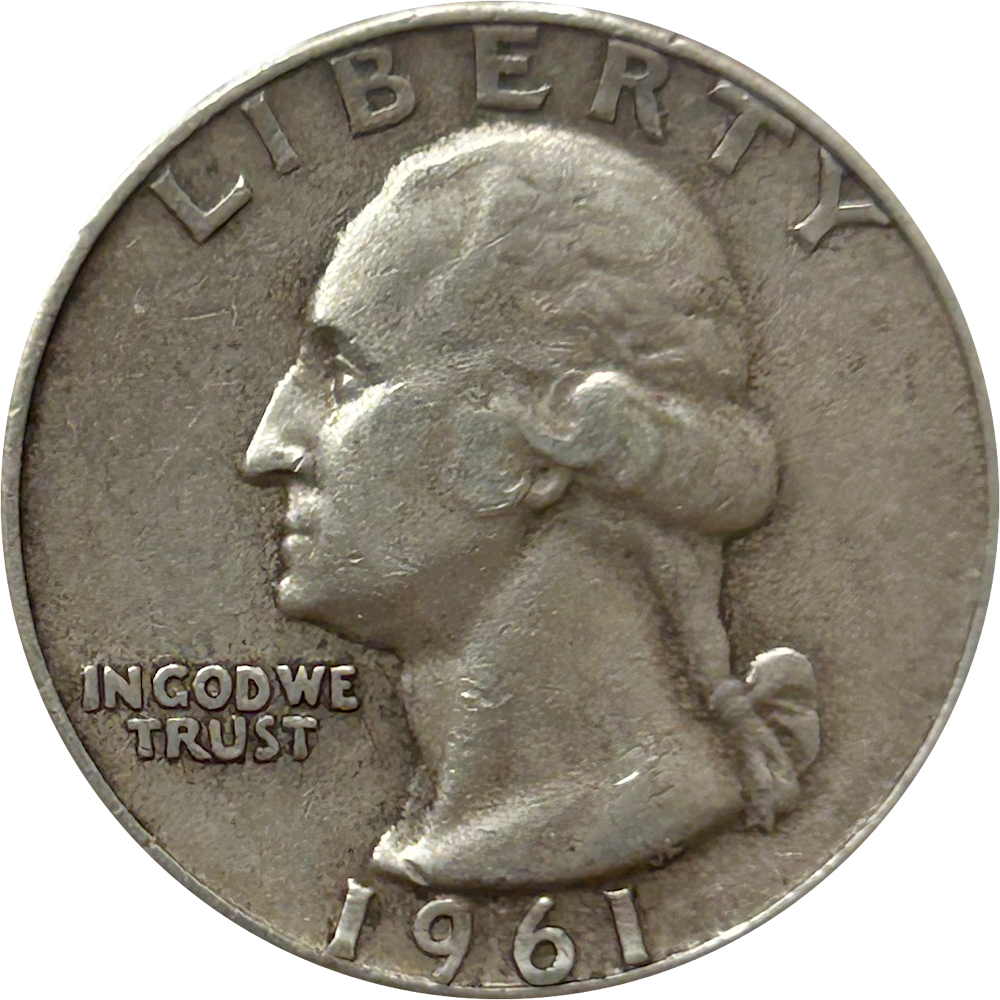
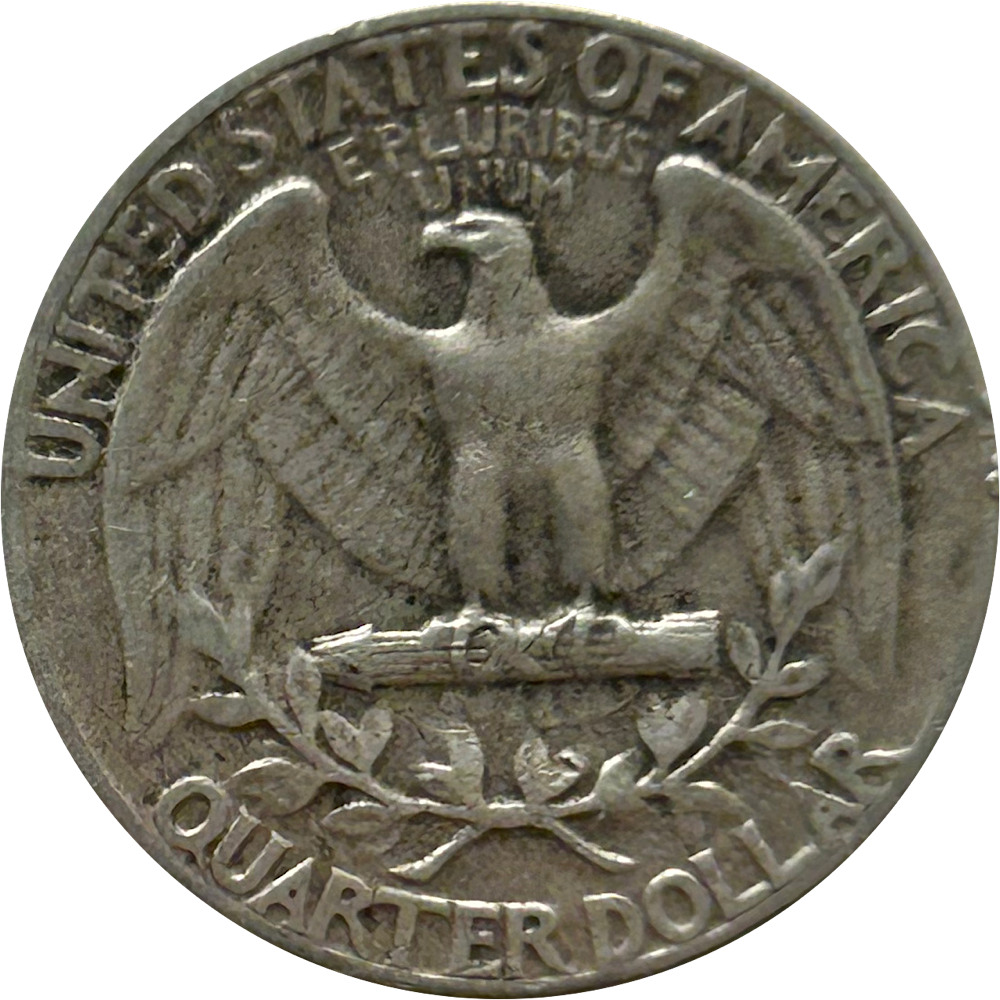
My dad must’ve seen how interested I was in the one coin he gave me, so he pulled out his coin collection from his teenage years. My dad explained to me that most of the coins in his collection were found in circulation. Like many families, we have a large container of loose change that accumulates over time. I went through the entirety of it, finding a few Lincoln wheat cents, including one from 1912, a coin nearly 100 years old at the time. Searching through change seemed to be the most cost effective way for me to add coins to my collection at such a young age.
I soon began begging my parents to take me to local banks to buy rolls of coins to go through. My order regularly consisted of $50 of pennies and $100 of nickels every other week; I always seemed to find at least one Buffalo nickel, or a silver war nickel in every $100 of nickels that I went through. Along with searching through rolls of coins, I started metal detecting. I received a Whites Coinmaster Pro on my birthday in elementary school and began digging up our property. My very first silver coin found metal detecting was an 1875-S Seated Liberty Dime found on our property. My mom and dad would also take me to a local coin shop on my birthday and give me $50 to spend on new coins for my collection. At some point, I received a Red Book, which I studied intensely, memorizing the key dates of different series.

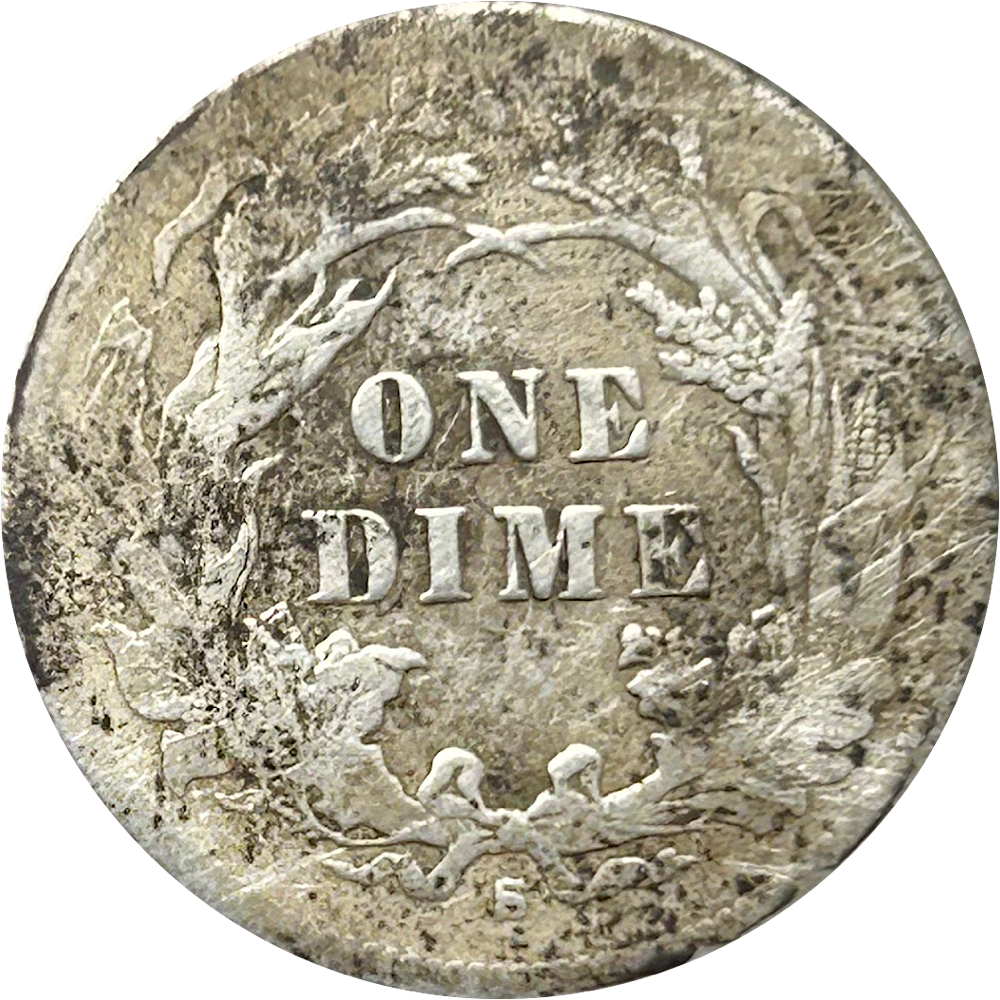
My mom and dad also took me to many local coin shows. My favorite show of the year was located in Westford, MA right before Christmas. This show was super special because there was a dealer (Northeast Numismatics) who ran a great promotion, all children received a free handful of coins. I went to this show with my brother and friend, who also got a free handful of coins. When we all got home, we began researching and trading the coins with each other.
The 1961 Washington quarter that my dad gifted to me impacted my life on so many levels. It introduced me to the great hobby of numismatics and surely changed my career trajectory, which has led to many great relationships.
Very inspiring!




